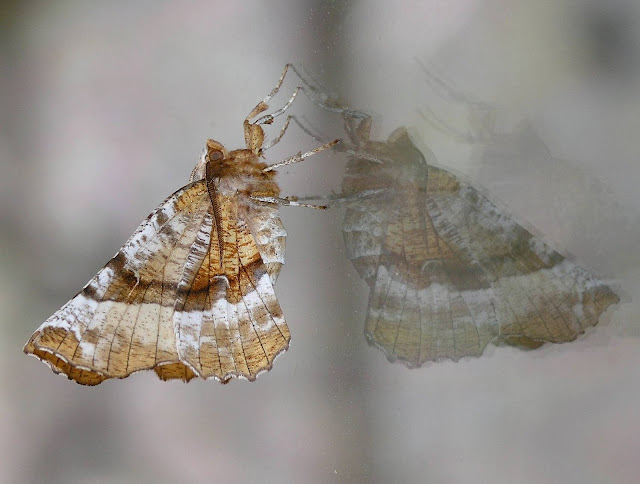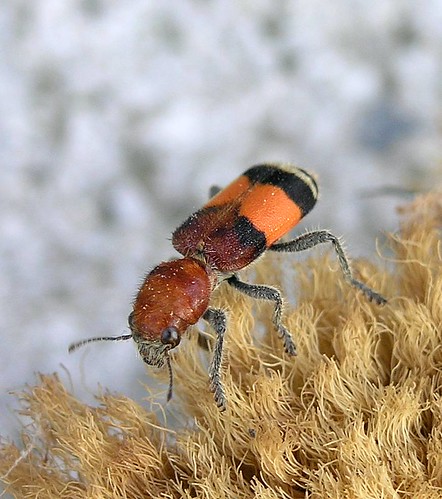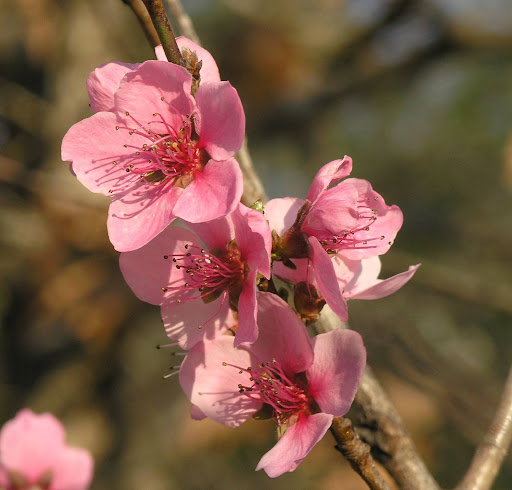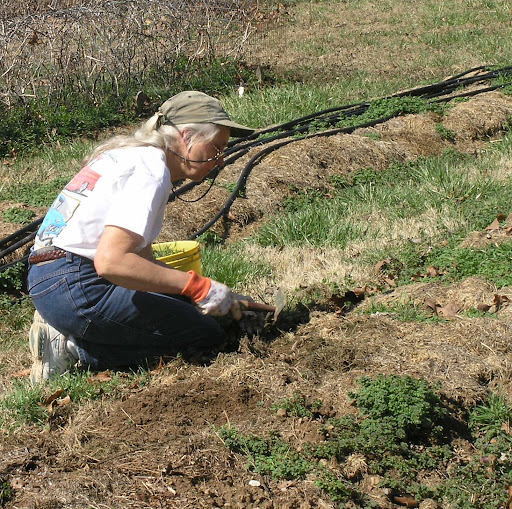A light freezing drizzle began falling here in north central Arkansas just after midnight on Tuesday, 1/27/09. As the morning progressed, drizzle became light rain. We lost electrical power around eight o'clock Tuesday morning. Northern Arkansas and surrounding areas are prone to ice storms because we often experience cold surface temperatures with warmer, moister air from the Gulf of Mexico riding just above. (See NOAA's
Winter precipitation types and their environments.)
Every three or four years we have an ice storm bad enough it takes down a few power lines – usually when trees fall on them – and we are without electricity for two or three days. By late morning, we'd had that typical ice storm. Unfortunately, this ice storm was far from finished. A moderate rain began falling
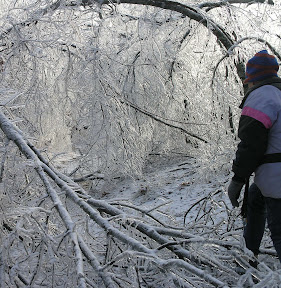
around noon and fell steadily until almost midnight. By late morning you could stand out on our front porch and hear a “pop” every few seconds. Sometimes the the “pop” was fairly gentle as a small limb broke. A larger limb breaking was louder. Sometimes the “pop” sounded almost as loud as a gunshot when a tree truck suddenly snapped under the strain. The sound of trees being broken into bits is awful – and it continued steadily for around twelve hours. During most of the afternoon, our temperature was sitting right at 32ºF/0ºC – just a degree or two warmer and all of that destruction would never have happened.
I haven't taken a formal survey, but I'd guesstimate that around 10-15% of our trees are totally destroyed, either uprooted, snapped in two or are just a stripped trunk with no branches. Another 30-40% have severe damage (i. e. are missing their tops and/or several major limbs). I doubt any tree larger than a sapling came through the ice storm unscathed.
Most of the severe damage from the ice storm only occurred in the upper elevations. The valleys didn't get nearly as much ice as we did. However, right after the ice storm, no one had electricity. The service between towns goes across some of those higher elevations and was brought down in the ice storm. It took about a week before the small towns in our area had power restored. Emergency food and shelter was provided for those who were dependent upon electricity for heating and cooking. A National Guard unit out of Oklahoma even set up portable facilities providing showers and clothes washing. Since we heat with wood and cook with propane, we didn't need the emergency help and didn't know about the showers and washing machines until they were already gone.
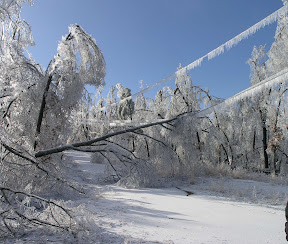
The ice storm was predicted, though there was no way to predict how bad it was going to be. I made a trip into town on Monday to stock up on supplies. I did pretty good stocking up on food items, but totally failed elsewhere. I bought neither extra batteries nor gasoline. (In my defense, I will say those two items have never been needed in the past after an ice storm.) I also didn't do well with my purchasing of coffee. I stocked up on coffee in bean form, forgetting that the coffee grinder must have electricity. We had a stove top percolator from our camping gear, so we could make coffee, but for a while there I thought I was going to have to take a hammer to those coffee beans to break them up into a brewable size. Jo eventually remembered the hand-cranked grain mill we've had packed away for years. It's not a very handy tool for grinding coffee beans, but it works better than busting them up with a ball peen.
The morning after the storm, Jo and I braved a trip up the road. Walking up the road wasn't entirely safe, but less dangerous than walking in the woods where limbs and trees were still succumbing to the stress of the ice load, breaking and falling. I'd estimate there were at least three dozen trees of various sizes partially or completely blocking our road out. At first, we decided to let someone else – the county or the electric co-op – clear the road and rescue us. We reasoned that a crew with the proper equipment could clear the road down to our house in an hour or so whereas it would take Jo and I two or three days of hard work. Having to cut all that debris up into pieces small enough for

us to move would be a slow process. It would also be a somewhat dangerous process since most of the trees were hung up and only partially down and many were entangled with other limbs and trees – and the power line. Some limbs and trees were still under a lot of stress. An inattentive saw cut could release a trapped limb that would re-arrange your head.
However, after a few days we realized the damage throughout the county was so extensive that no one was likely to rescue us any time soon. So after giving the ice a few days to melt, we began chainsawing our own way out. We made it about three-quarters of the way out when the county crew showed up and finished the job coming from the other direction. On Tuesday, 2/3/09, we could drive out for the first time in a week.
End of Part I. More to follow.
(Note: As time and a slow dialup connection allow, I will be editing and uploading ice storm photos to a Picasa online album. If you want to check out the Picasa album from time to time, it is
here.)
.

January Ice Storm: Part I
